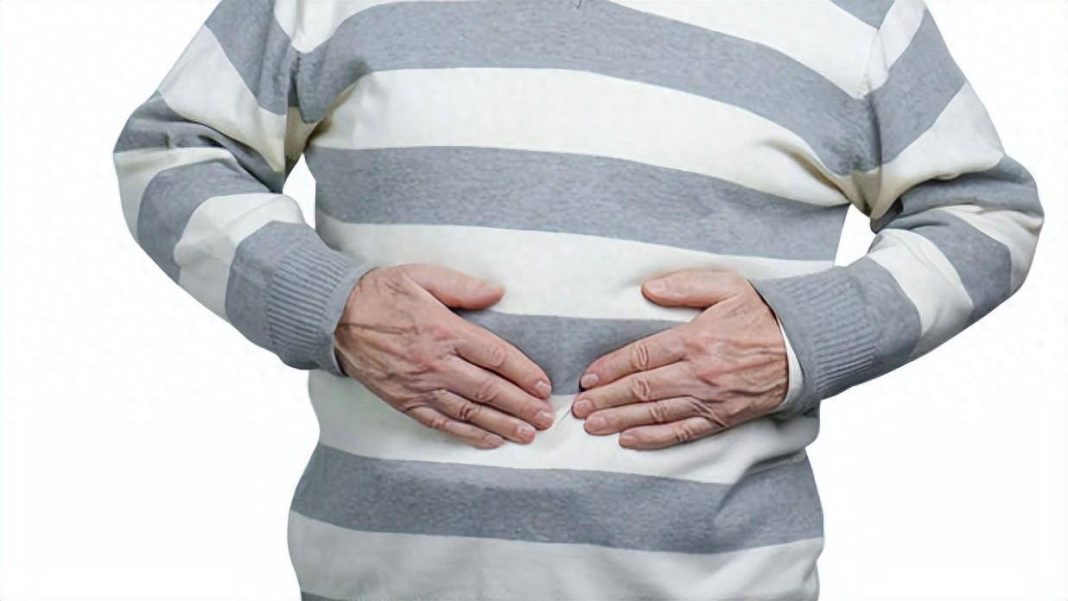With the passage of time, countless social engagements and drinking parties have become the norm of middle-aged life. Unknowingly, the body has also entered the “crisis era” – beer bellies protrude, and pot bellies are hard to control. Many middle-aged men, helplessly watch as their small bellies quietly grow.
Beer bellies and pot bellies not only distort the physique but are also invisible killers of health. Some patients lamented, “In life, besides weight gain being easy, everything else is difficult.”
The abdomen is the “most yin place” of the human body, prone to accumulating phlegm and dampness. The common big belly we see is precisely the manifestation of phlegm and dampness accumulation in the abdomen. Over time, this will become the culprit of various diseases. So how exactly are these beer bellies formed?
### How beer bellies are formed and related factors!
1. Aging, Slower Metabolism
Even males who never liked drinking may develop the so-called “beer belly” after middle age. The main reason behind this phenomenon is that as age increases, the body’s metabolism rate slows down, making consumed calories difficult to be effectively burnt. These unburned calories will eventually convert to fat and gradually accumulate in the abdominal area, thus forming what people commonly call the “beer belly.”
2. Prolonged Sitting
Due to prolonged sitting in offices and lack of sufficient exercise, people tend to accumulate a large amount of fat in the abdomen.
3. Overeating
Although beer is not the sole cause of beer bellies, its influence cannot be ignored. After drinking beer, people often feel hungry and end up consuming a large amount of “drinking snacks,” thereby increasing calorie intake.
4. Lack of Sleep
As age increases, our deep sleep stages gradually shorten. This decrease in sleep quality leads to a corresponding reduction in hormone secretion. Hormone deficiency will further increase the body’s fat content, particularly the accumulation of abdominal fat.
5. Excessive Stress
Men hold significant importance in society, bearing the dual responsibilities of family and career. Thus, they often endure heavy psychological burdens and easily develop anxiety. This sustained psychological pressure often leads to increased appetite, adversely affecting metabolism and ultimately resulting in weight gain.
### The Harms of “Beer Bellies”?
1. Prone to Fatty Liver
The abdominal area is a convergence point of many key organs, including the liver, pancreas, and gastrointestinal tract. Excessive accumulation of abdominal fat can lead to the influx of a large amount of visceral fat into the digestive system, causing damage to the liver and gradually developing into fatty liver disease.
2. Increased Cancer Risk
Individuals with abdominal obesity are more susceptible to colorectal cancer compared to others. Abdominal obesity also raises the risk of developing various diseases like liver cancer.
3. Prone to Heart Disease
Excessive abdominal fat disrupts normal blood supply within the body, affecting heart function and increasing the risk of heart disease.
4. Susceptible to Diabetes
Abdominal obesity directly affects metabolism, disturbing the normal consumption and absorption of sugars, ultimately leading to the onset of diabetes.
### Three Acupoints to Eliminate Beer Bellies – Regular Massage is Beneficial!
1. Upper Abdomen Acupoint
Massage of this acupoint helps reduce the burden on the esophagus. Located 5 inches above the navel, regular massage of this acupoint can prevent indigestion caused by fast eating and help avoid resulting weight gain issues.
2. Middle Abdomen Acupoint
Massaging the middle abdomen acupoint, located 4 inches above the navel, effectively promotes stomach peristalsis. Consistent massage of this acupoint not only boosts immune function but also significantly enhances the digestive system’s ability, aiding in the breakdown and burning of body fat.
3. Lower Abdomen Acupoint
Applying pressure to the lower abdomen acupoint helps prevent toxins from lingering in the body. Located 2 inches above the navel, this acupoint promotes food digestion and absorption, aiding in overall weight loss.
### How to Deal with Middle-Aged Beer Bellies?
1. Adjust Lifestyle
(1) Ensure Adequate Sleep
To maintain normal bodily functions, aim for 7 to 8 hours of sleep daily and avoid staying up late as much as possible.
(2) Stress Reduction
Learn stress reduction and relaxation techniques such as meditation or deep breathing to alleviate tension and prevent prolonged stress.
(3) Maintain Regular Schedule
Maintain a stable daily routine to avoid disrupting the body’s biological clock, thus preventing adverse health impacts.
2. Balanced Diet
(1) Control Caloric Intake
Choose low-calorie and nutrient-rich foods, avoid greasy and high-sugar foods, and reduce intake of refined carbohydrates.
(2) Increase Fruit and Vegetable Consumption
Fruits and vegetables are rich in dietary fiber and vitamins, which not only increase satiety but also aid in intestinal peristalsis, effectively preventing constipation.
(3) Increase Protein Intake
Select high-quality protein foods such as fish, meat, eggs, and dairy products to promote muscle development and recovery, enhancing metabolic function.
3. Moderate Exercise
(1) Avoid Prolonged Sitting
After every hour of work, stand up and move for 5 to 10 minutes to reduce continuous sitting time and prevent abdominal fat accumulation.
(2) Aerobic Exercise
Choose aerobic exercises suitable for your condition, such as walking, jogging, swimming, or biking, aiming for 3 to 5 sessions per week, with each session lasting at least 30 minutes.
(3) Strength Training
Engage in strength training exercises such as weightlifting, push-ups, and sit-ups to promote muscle growth and increase metabolic rate.


